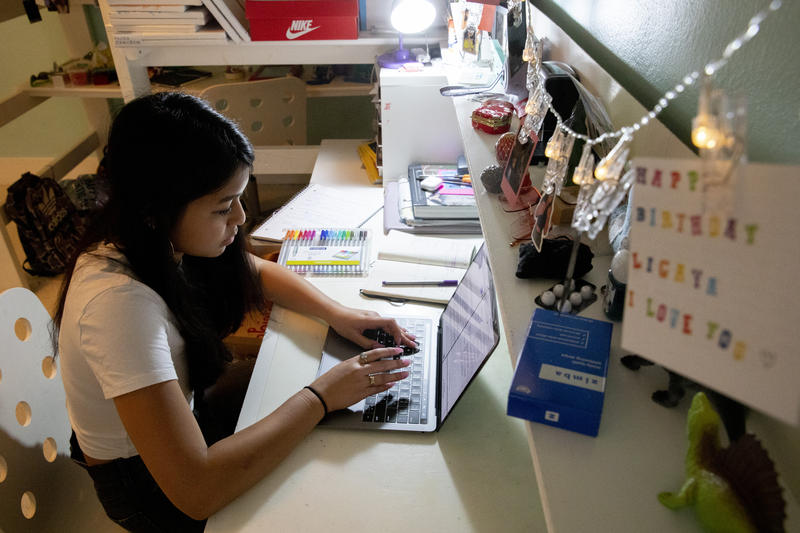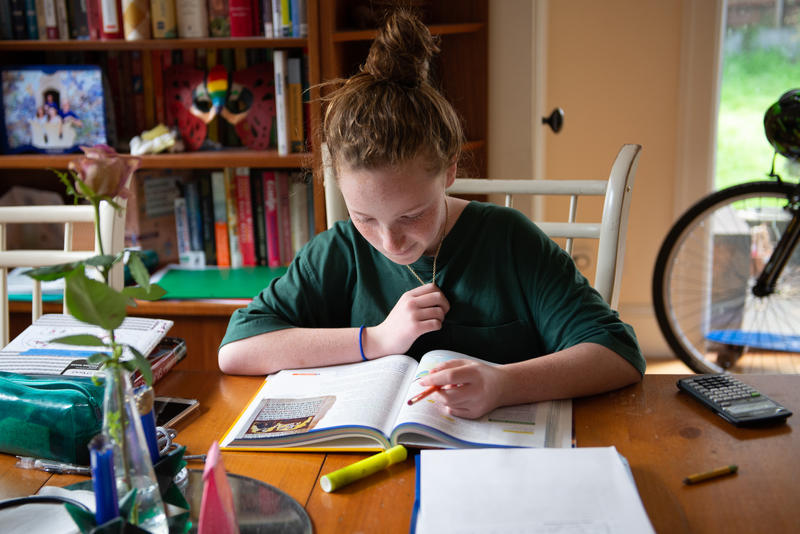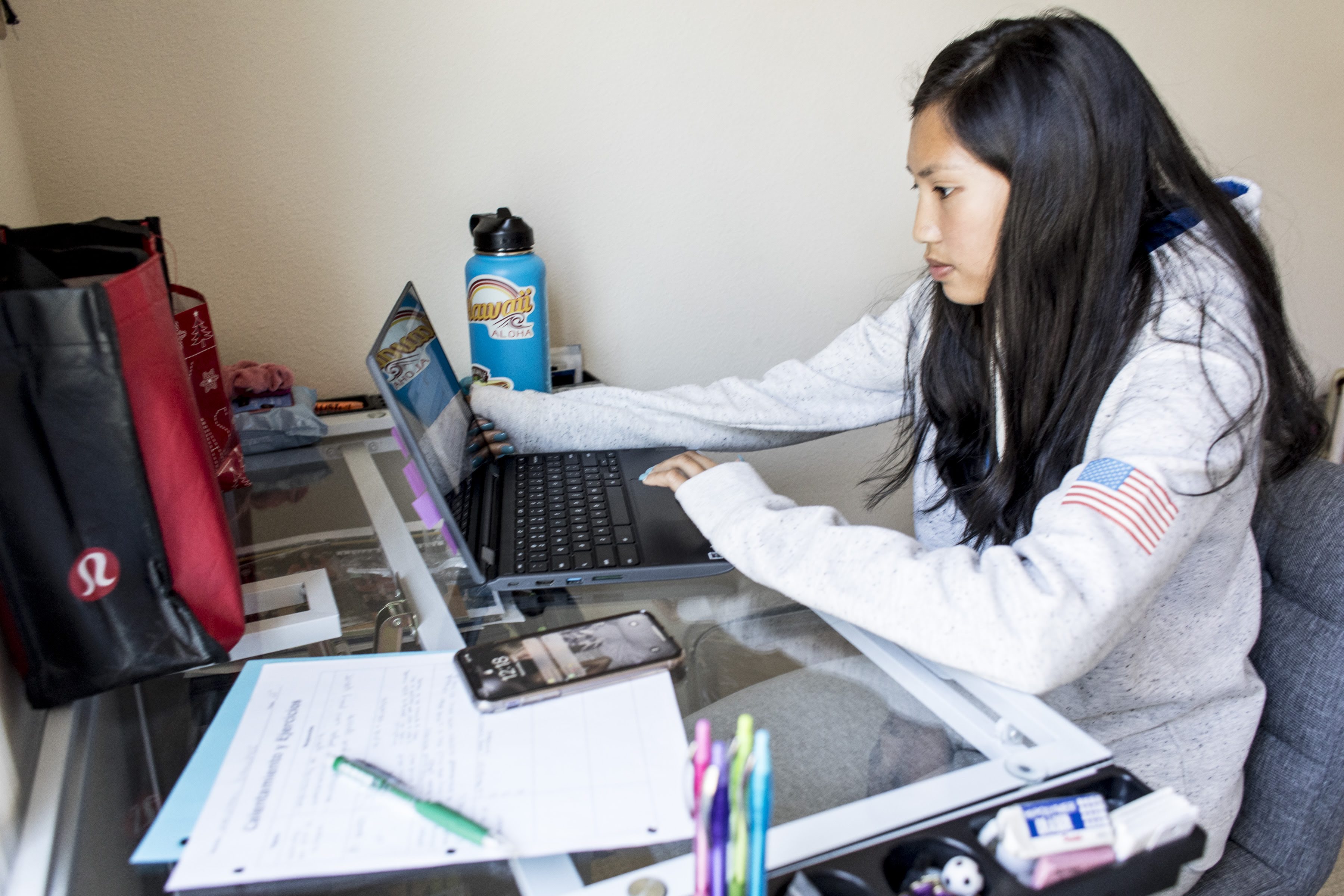


Superintendents’ anxiety is rising as they prepare to reopen school not just for students physically returning but also for an unknown number choosing to learn from home.
The Legislature said districts must provide those students with an education, too, and recrafted the provisions for independent study, an alternative for students who need to do their academics outside the classroom. Originally designed to accommodate schedules of child actors and aspiring Olympic athletes or for victims of bullying, it’s now an option for students of all grades fearful of contracting Covid.
But the new independent study law, in the trailer bill elaborating on this year’s state budget, is complex and was designed by legislative staff without a hearing. Most districts have had less than six weeks to prepare. And, with the rapid spread of the delta variant and cases of Covid school infections in the news, superintendents are worried they could be swamped with applications for independent study by parents who then become dissatisfied with what they signed up for.

“Two weeks ago, superintendents were saying the demand was low. Now they’re saying they suspect there could be a huge increase,” said Barrett Snider, who represents independent studies programs as a partner with Capitol Advisors, a Sacramento school consulting firm. “The ground is shifting under their feet again.”
Anticipating a need to hire additional teachers when they’re already having trouble replacing those who have retired is creating stress, Barrett said. “They’re pulling their hair out.”
Earlier last week, only 25 parents in the district had signed up for an expanded independent study program at the Kern High School District in Kern County, the largest high school district in the state. But once school principals explain the program, the district anticipates as many as 5,000 students — 1 in 8 — will enroll by the time schools reopen on Aug. 18, said Dean McGee, associate superintendent of educational services and innovative programs.
Other districts are projecting 5% to 8% of students choosing the option — and a lot fewer in those districts that are discouraging it or doing little to promote its availability.

Some parents may enroll and transfer back to in-person instruction after discovering independent study isn’t working for their kids or for them, since it will demand more home supervision. If the delta variant wanes or vaccines are approved for children under 12, families may desert independent study in droves, creating potential challenges integrating them back into school.
Few districts are in the position of Kern, which has developed a virtual curriculum of prerecorded lessons, Google Docs and YouTube videos. It has been planning for months to open Kern Learn Extension for independent study in every school. Even so, coordinating a program that can grow and shrink based on enrollment swings on short notice will not be easy, McGee said.
At a meeting this week, “All of the principals were looking at me like they could kill me,” McGee said. “Now the day is here, and it is more urgent than we thought.”
At the other end of the spectrum are small school districts, lacking the administrative staff and flexibility of big districts. They’re especially uneasy about the potential financial penalties — a loss of student funding — if they don’t comply with the law’s regulations and extensive documentation requirements.
The biggest challenge, said Helio Brasil, superintendent of 700-student Keyes Union School District in the Central Valley, is finding teachers to oversee students who decline to return, whether that’s due to health concerns or opposition to masking requirements.
“Our biggest issue is hiring. We are getting no applicants,” Brasil said. “This adds one more layer of staffing, and we were already struggling with that.”
Fully aware that many parents were displeased with the quality of distance and hybrid learning and angry that many districts delayed reopening schools last year, the Legislature let the law authorizing remote learning expire in June. Gov. Gavin Newsom and legislators made clear in the budget they passed in June — before the delta surge — that bringing back students to fully reopened schools is the priority.
But recognizing that health-compromised students and families also need an option, they gave them the choice of independent study. Created decades ago to serve students unable to handle a regular schedule, it allows students with extenuating circumstances to study on their own, supervised by a teacher. They can do so as long they regularly turn in assignments, and the school thoroughly documents their progress.
In Assembly Bill 130, the budget trailer bill, the Legislature added safeguards to hold districts accountable for providing a rigorous program and staying in touch with students who stopped participating, as many did last year. Requirements include:
The rewritten independent study provisions in Assembly Bill 130 reflect a compromise between administrators chafing at additional regulations and paperwork and student advocates who argue the requirements should be more rigorous.
“We’re disappointed at the infrequent live interaction for high school students, who research is showing have experienced trauma,” said Atasi Uppal, senior policy attorney at the National Center for Youth Law. “We need them to feel connected to school even if they have to choose the remote option for their own health and safety.”
As the name implies, independent study best serves those who thrive working on their own, at their own pace. Imposing daily contact and hours of instruction on a system not designed for it is an imperfect fit.
Jason Peplinski, superintendent of Simi Valley Unified, where many independent study students work in the film and TV industry, said the new requirements may not work for traditional independent study families and will likely disappoint new families expecting extensive teacher-led instruction. He and other superintendents are concerned that unhappy parents will turn to private schools or online charter schools.
That’s what Thia Gielow is doing for her eighth grade son, who had been attending a Waldorf charter school that isn’t offering him remote learning; under AB 130, charter schools aren’t required to provide independent study. Independent study in her home district, Saddleback Valley Unified in Mission Viejo, in Orange County, offers little live instruction and contact with teachers, so her son will enroll in California Connections Academy, an online charter school that operates in 32 counties in California and is tied to Pearson, a multinational publishing and education company.
“This sounds like the way to go,” she said. “They do three (live) classes per week per subject, and students meet virtually with their peers.” If he likes it and does well, he may continue with the program in high school, she said.
To satisfy parents and deter defections to online charters, Arturo Valdez, deputy superintendent of the Los Angeles County Office of Education, said he recommended to districts that they provide more virtual instruction than AB 130 requires. “If you do the minimum, you will have problems even if meeting the legal parameters,” he said.
Several dozen school districts, such as Pajaro Valley Unified and Anaheim Union High School District, had created separate virtual academies as separate schools before the pandemic and are in a position to expand them. Kern High School District may be distinct in providing a uniform virtual program on a districtwide master schedule in all schools through Canvas, the district’s online learning system.
Pleasanton Unified had been planning Pleasanton Virtual Academy for more than a year and will open Aug. 11; as of last week, 241 students were enrolled, and the number could grow to 400 out of 14,000 students, said Superintendent David Haglund. Every grade covering all subjects, including high school, will be offered. Credentialed teachers, some on part-time assignments, will supervise students taking online courses through Edgenuity, a content provider. The district will encourage high school students to take A-G courses through Las Positas College, a community college.
Lodi Unified, with 28,000 students in San Joaquin County, is offering parents the choice of Lodi Unified Digital Academy and independent study at Independence School and the Valley Robotics Academy.
Delano Union School District, a 5,000-student district in Kern County, is creating a fully staffed virtual school that will “echo the traditional school day,” said Superintendent Rosalina Rivera. The district, in a farming community with a high percentage of low-income students, is using extra federal funding to offer tutorials and hire English language development and math coaches, a social worker and a counselor. Live instruction will be in 80-minute blocks, with time set aside to deal with trauma and social-emotional issues.
Covid infection rates are higher than the state average in Delano, and asthma rates are high, too. Parents want this virtual option, at least for now, Rivera said, and are making arrangements with grandparents and aunts. “We want to build a program our parents can be proud of,” she said. As of last week, parents of nearly 300 students had signed up, and Rivera expects initially to enroll about 500.
In Los Angeles Unified, the state’s largest district, 10,280 students — about 2% of students — had signed up for independent study hours before deadline on Aug. 6. They will enroll in the City of Angels school, which provides online and independent study programs. Elementary school students will have 3 hours daily of live instruction with a teacher. Secondary school students will have three 70-minute periods per day with at least 40 minutes of direct student-teacher time per period. Whenever students are not receiving direct instruction, they will work independently. City of Angels does not offer dual language or magnet programs; any student currently enrolled in such programs who chooses to join the online program will retain their spot in their original school assuming an eventual return to in-person instruction.
School districts can apply for a waiver from the mandate to offer independent study this year if it would create “an unreasonable fiscal burden.” That standard may be difficult for districts to meet, given the surfeit of one-time state funding and federal aid they’ve received. The alternative to a waiver is allowing students to transfer to other districts offering independent study programs. Delano Unified and Kern High School District have indicated their programs have space; Pleasanton already has 16 students from neighboring districts signed up. County education offices in Kern and Los Angeles are among those serving as brokers for districts with openings.
Districts often obstruct interdistrict transfers because state funding follows the student. But parents have a strong argument to press their case since districts will be held financially harmless for a loss of enrollment in 2021-22, as they have been for the past two years when they were affected by the pandemic. The state, which is expected to run a revenue surplus, would pick up the tab for a decline in enrollment at no loss to a district.
Districts complain the Legislature and state officials haven’t answered their concerns about unclear language and unrealistic timelines in the bill. What, for example, does providing “opportunities” for live instruction mean? Will districts be held responsible if students miss them? And how can they provide all A-G high school classes in independent study when school has already started? How will they know if they face penalties when the auditing guide they’ll be judged by won’t be published for months? Can districts create a cutoff date for signing up for independent study, when AB 130 says they are entitled to this option?
The California Department of Education is soon expected to offer an extensive FAQ to answer questions and clarify the requirements. Some superintendents are calling for big changes to Assembly Bill 130 when the Legislature considers cleanup language to the trailer bill later this month, but that’s not likely to happen, said Assemblyman Phil Ting, D-San Francisco, who chairs the Assembly Budget Committee.
“While the state anticipates individual or small group quarantines being needed during the school year, these changes to independent study ensure that students still have access to quality education,” he said in a statement. “State public health leaders remain confident that widespread school closures will not be necessary in the coming school year, and we do not anticipate major changes (to the trailer bill) when session reconvenes.”
EdSource writers Sydney Johnson and Betty Márquez Rosales contributed to this article.